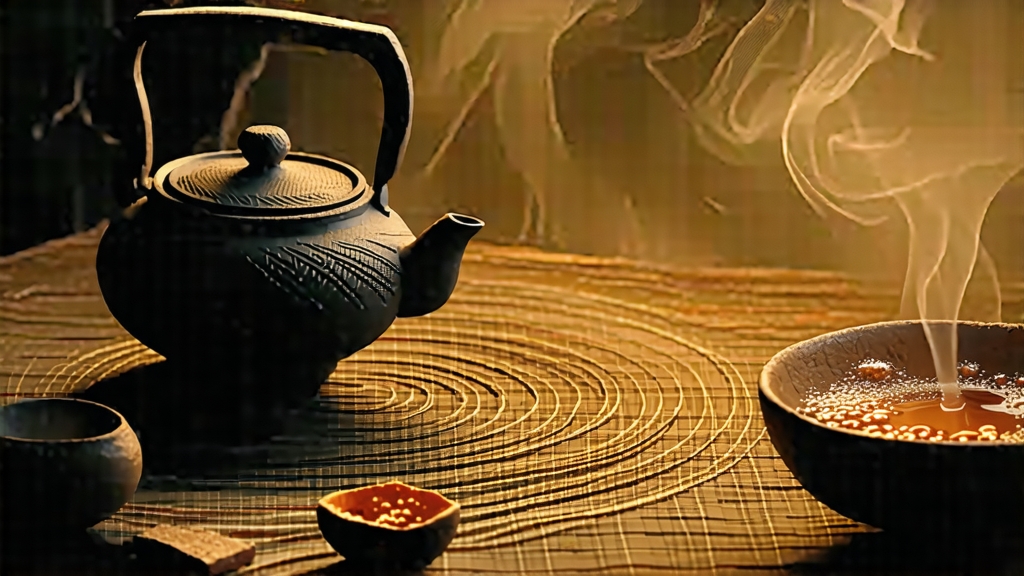
Tucked into the humid folds of southern China’s Guangxi Zhuang Autonomous Region, Liupao (sometimes spelled Liu Bao) is the quiet prodigy of the dark-tea family. While Pu-erh commands the spotlight, Liupao has spent four centuries maturing in bamboo baskets and earthen storerooms, slowly acquiring the mellow, medicinal character that once earned it passage on the legendary Tea-Horse Road. Today the tea is experiencing a renaissance among collectors who prize its camphor-betel nuance and its uncanny ability to taste older than its years.
History: From Frontier Tribute to Global Curiosity
The first written record appears in the 1861 Cangwu County Gazetteer, noting that “dark tea from Liupao” was bartered for horses with Tibetan and Mongolian traders. By the Qing dynasty the tea had become imperial tribute; palace archives list Liupao bricks among the gifts presented to the Qianlong Emperor in 1790. The name itself derives from the old trading post of Liupao Market in Wuzhou Prefecture, the clearinghouse where mountain tea was weighed, packed into plaited bamboo baskets, and rafted down the Xun River to Guangzhou’s foreign hongs. European merchants labeled it “China Black Basket Tea,” unaware that the baskets were merely the shipping vessel, not the tea style. After the 1950s state monopolies diverted most Liupao into domestic medicinal supply, the tea slipped into obscurity outside Guangxi. Only in the past decade has boutique demand revived ancient village techniques, and now small lots appear at London tea auctions and Brooklyn cupping tables alike.
Micro-Terroir: Why Guangxi Tastes Different
Liupao needs three environmental signatures: subtropical heat, lateritic red clay, and microbial air spores that thrive on wild betel-nut palms. The principal gardens lie between 200–600 m in the Daqingshan and Liudingshan ranges, where morning mist lingers until noon, feeding tea leaves with moisture that will later sustain the crucial wet-pile fermentation. Indigenous cultivars—Yunqi Da-ye, Lingyun Bai-mao, and the newly registered Guangxi Da-ye Zhong—possess unusually thick cell walls rich in pectin, the substrate that bacteria convert into the tea’s hallmark sweet earthiness.
Craft: The Eight-Step Alchemy
- Pluck: one bud plus third or fourth leaf, when amino acids have declined and polyphenols peaked.
- Solar withering: 45–60 min on split-bamboo trays until leaf water drops to 65 %.
- Indoor piling: leaves heaped 20 cm deep for 3 h to generate enzymatic heat, arresting green character.
- Kill-green: 280 °C wok roast for 3 min, just enough to denature oxidases while preserving surface microbes.
- Rolling: 40 min on a bamboo-ribbed roller to rupture 60 % of cells, preparing sugars for microbial feast.
- Wet-pile fermentation: the signature step. Leaves are sprayed with mountain spring water (28 % moisture), piled 70 cm high, and covered with jute sacks. Indigenous Bacillus subtilis and Aspergillus niger raise the pile temperature to 55 °C; every 5 days the pile is turned, aerated, and re-moistened. After 25–30 days the leaf turns chestnut-brown and emits a damp betel-nut aroma.
- Air-drying: spread 3 cm thick on bamboo racks in shaded ventilated lofts for 5–7 days until moisture falls below 12 %.
- Basket aging: the semi-dry tea is steamed for 30 s, compressed into 30–50 kg plaited bamboo baskets lined with untreated paper, then stacked in riverside caves or climate-controlled warehouses. Traditionalists insist on five years minimum before sale, but vintage lots from the 1980s and 1990s are now traded like Bordeaux.
Stylistic Spectrum
Young Liupao (1–3 years): liquor the color of burnt sugar, bright acidity reminiscent of tamarind, and a lingering cooling note on the tongue.
Middle-aged (5–10 years): color shifts to garnet, the betel character softens into dried fig and camphor, and a gentle sweetness coats the throat.
Aged (15+ years): deep mahogany, almost coffee-like clarity; aroma of old incense wood and rain-soaked terracotta; texture silky, with a returning